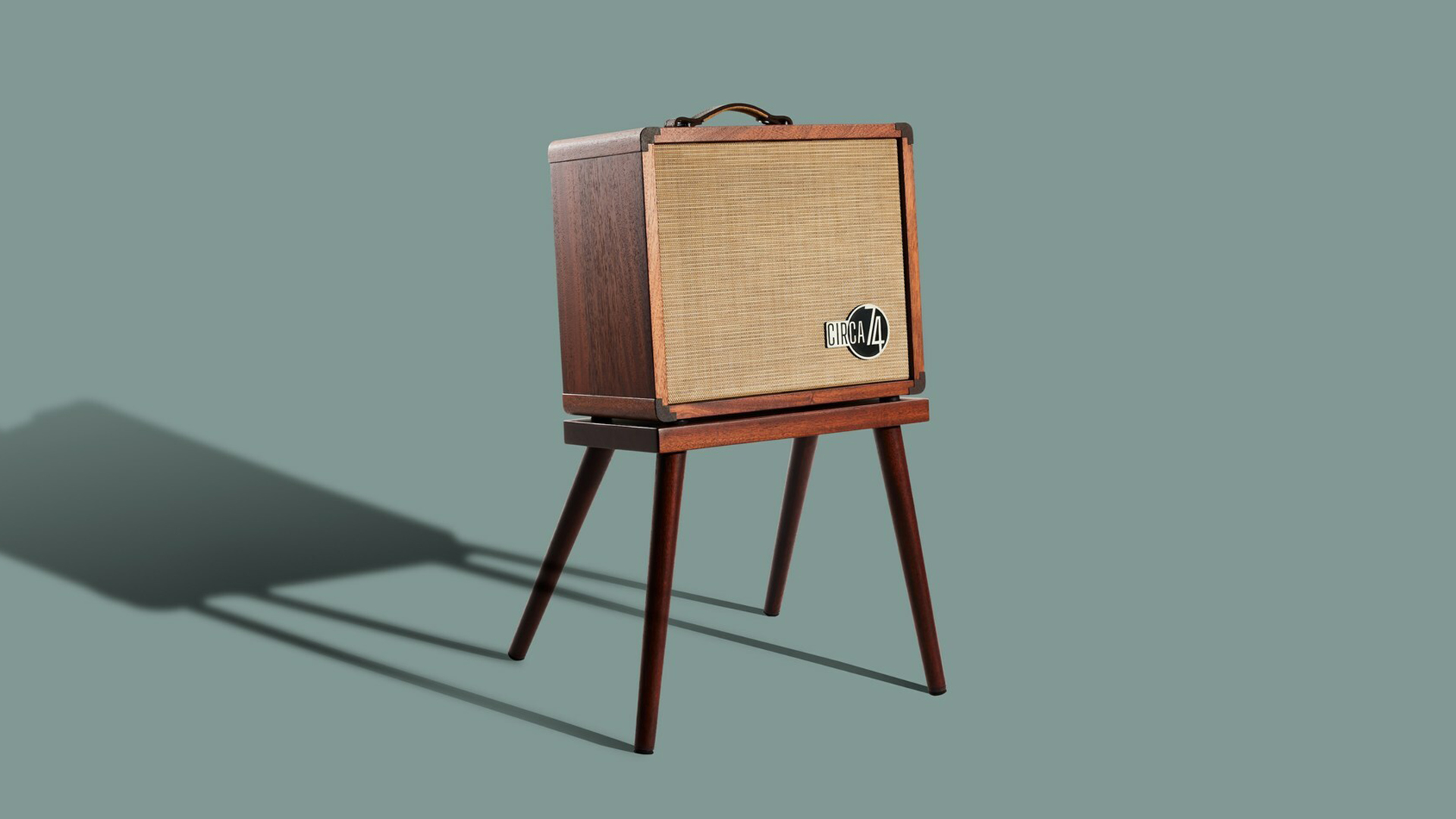
The acoustic guitar and electric guitar may share the same DNA, but they couldn’t be more different. It’s like how my older brother has a short, stocky build and red, wavy hair while I’m tall and somewhat slim (okay, that’s debatable) and have straight blonde hair.
However, many guitarists who own acoustic-electrics make the mistake of plugging their guitars into amps designed for electric guitars and then wonder why the sound is so artificial and disappointing.
Because the pickups, acoustic properties and frequency ranges of acoustics are dramatically different than those of an electric, acoustic-electric guitars really need their own specialized amps to optimize the sound in ways that an electric guitar amp and even a standard PA system can’t match.
Acoustic guitar amps have become increasingly prevalent over the years, but few are as expertly dialed in as the new Circa 74 AV150-10 Acoustic/Vocal amplifier combo. The amp is the result of a side project by Bob Taylor of Taylor Guitars, and it reflects his know-how from producing some of the most popular acoustic-electric models of the last 50 years.
Yes, the amp is a perfect match with a Taylor guitar, but it’s also designed to sound great with a wide variety of other models with different types of pickup/preamp systems as well as with a wide assortment of dynamic mics for vocals.
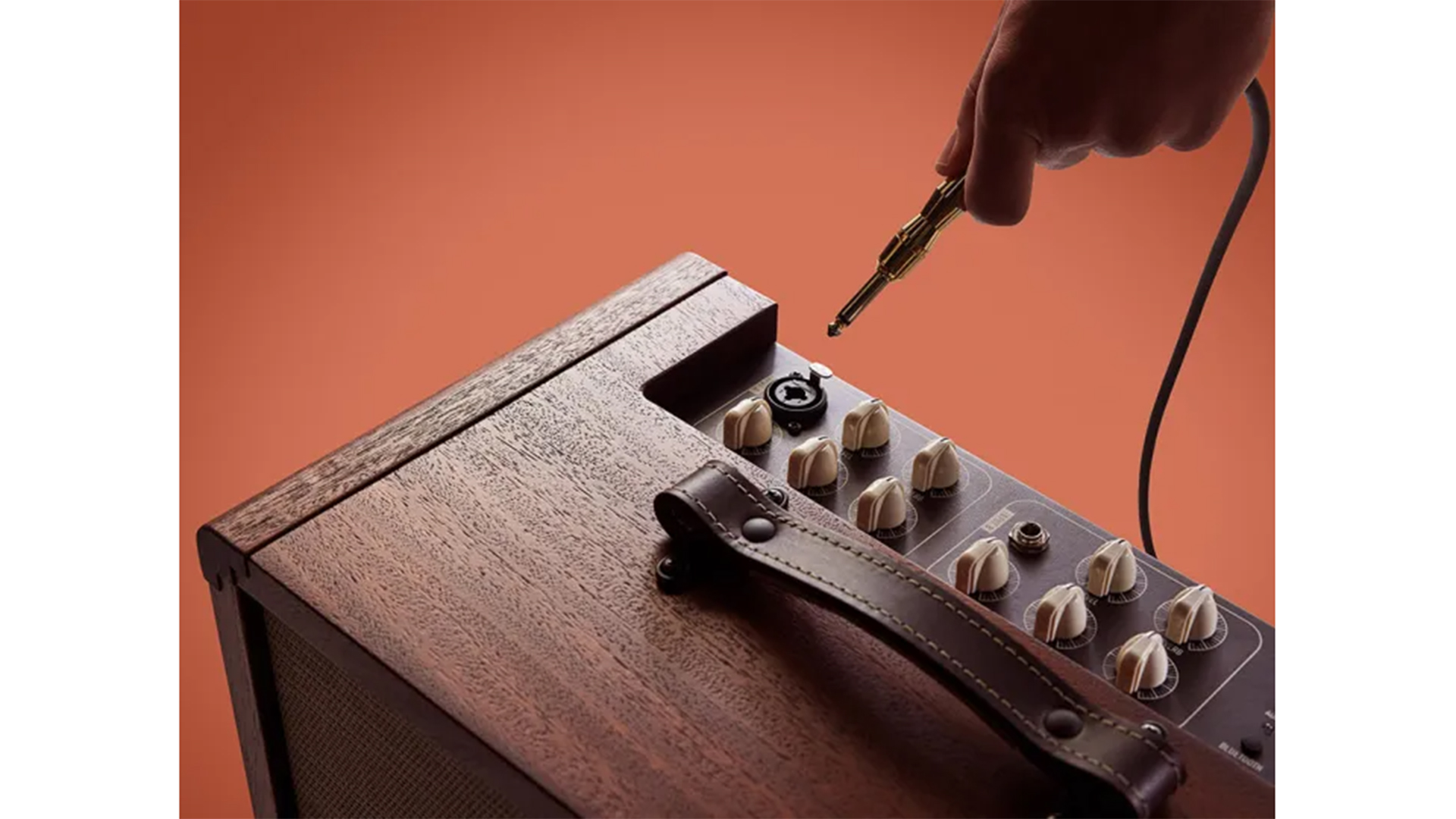
The AV150-10 is housed in an uncovered mahogany cabinet with a fully closed back, finished in a warm, reddish-brown hue and complemented by a sandy tan-colored grille. It comes with a matching mahogany base with four screw-in legs that give the amp a Jetsons-esque revived-modernism furniture appeal.
The stand tilts the amp upwards to optimize sound dispersion, while four recessed holes in the base hold the amp’s rubber feet safely in place.
The amp features two fully independent channels and a class D solid-state design that provides 150 watts RMS of output at 8 ohms to its 10-inch full-range speaker. Channel A has an XLR/phone combo jack for accommodating balanced or unbalanced signal input and is designed for vocals or guitar.
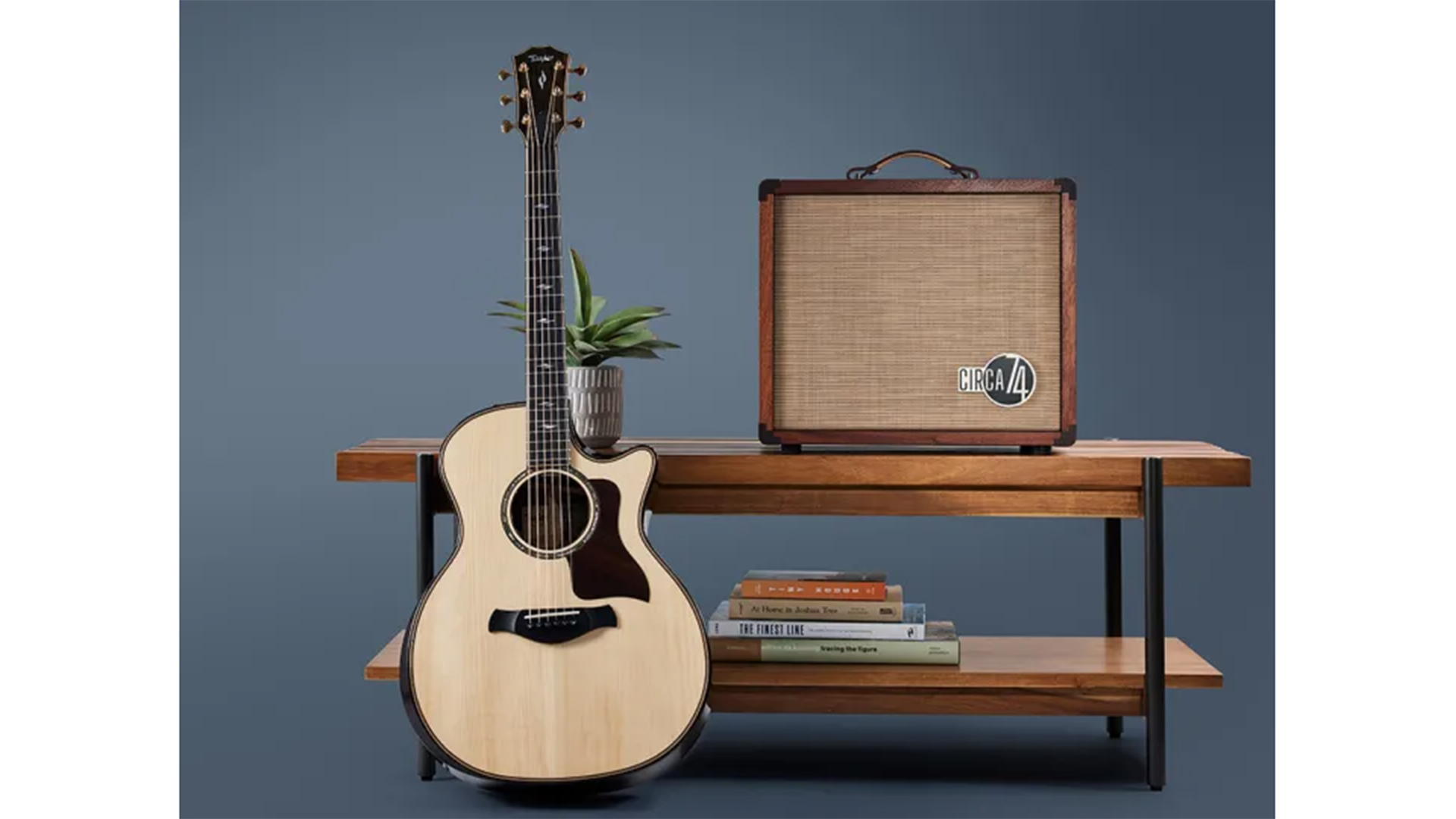
Channel B has a ¼-inch phone plug and is designed specifically for acoustic-electric guitar. Each channel has its own set of input level, reverb, bass, mid and treble controls.
The top control panel also provides a master volume knob, 1/8-inch headphone jack, 1/8-inch auxiliary input and Bluetooth connection button with indicator. The rear panel features an XLR direct output for connection to an external sound system or mixer and a ¼-inch mono line output.
Each guitar sounded stunningly warm, natural and lush, particularly the guitars with under-saddle pickups, where the amp produced a sound that was like putting your ear in front of the guitar’s soundhole, only much louder
To test the amp, I played several different acoustics with various types of pickup systems, including Taylor Expression, Fishman Prefix, Highlander and even a Seymour Duncan Woody soundhole pickup.
Each guitar sounded stunningly warm, natural and lush, particularly the guitars with under-saddle pickups, where the amp produced a sound that was like putting your ear in front of the guitar’s soundhole, only much louder.
The EQ section enables subtle tweaks and refinements of the guitar’s tone over a tasteful range that’s never too drastic or artificial sounding.
I’m no Pavarotti and my vocals are more in the Johnny Rotten or Iggy Pop range, but my sad attempts at singing through the amp actually sounded pretty good and were well balanced with the guitar’s output, with neither getting in the way or overly dominating the other.
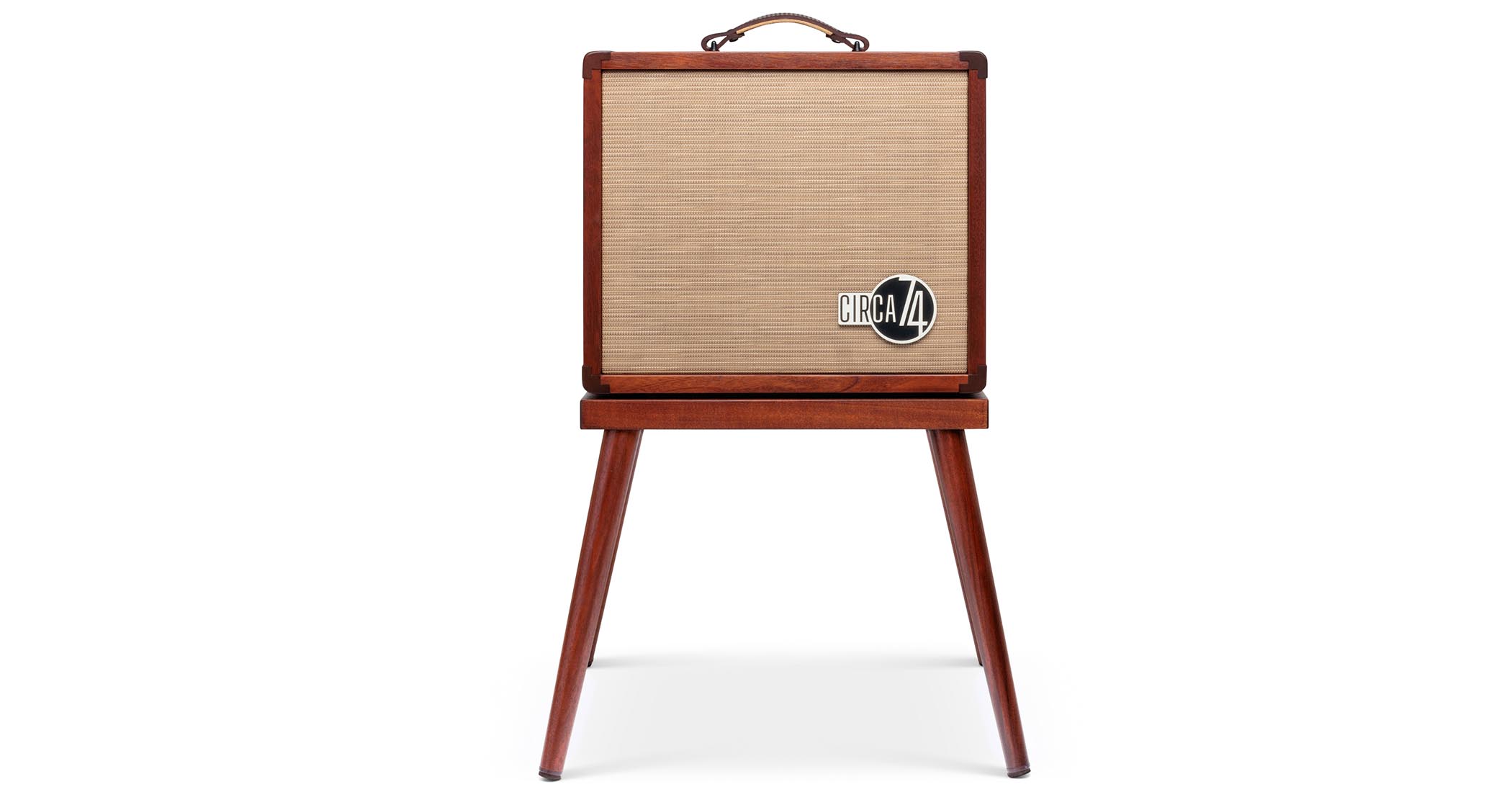
Since most vocalists use dynamic mics when performing live, the lack of phantom power for a condenser mic is no big deal.
However, while the amp’s built-in digital room reverb sounds quite nice, it’s a bit limited as the reverb knob only adjusts the dry/wet mix.
An effects loop for patching in an external processor would be a welcome addition for many players who rely more heavily on effects as part of their performance.
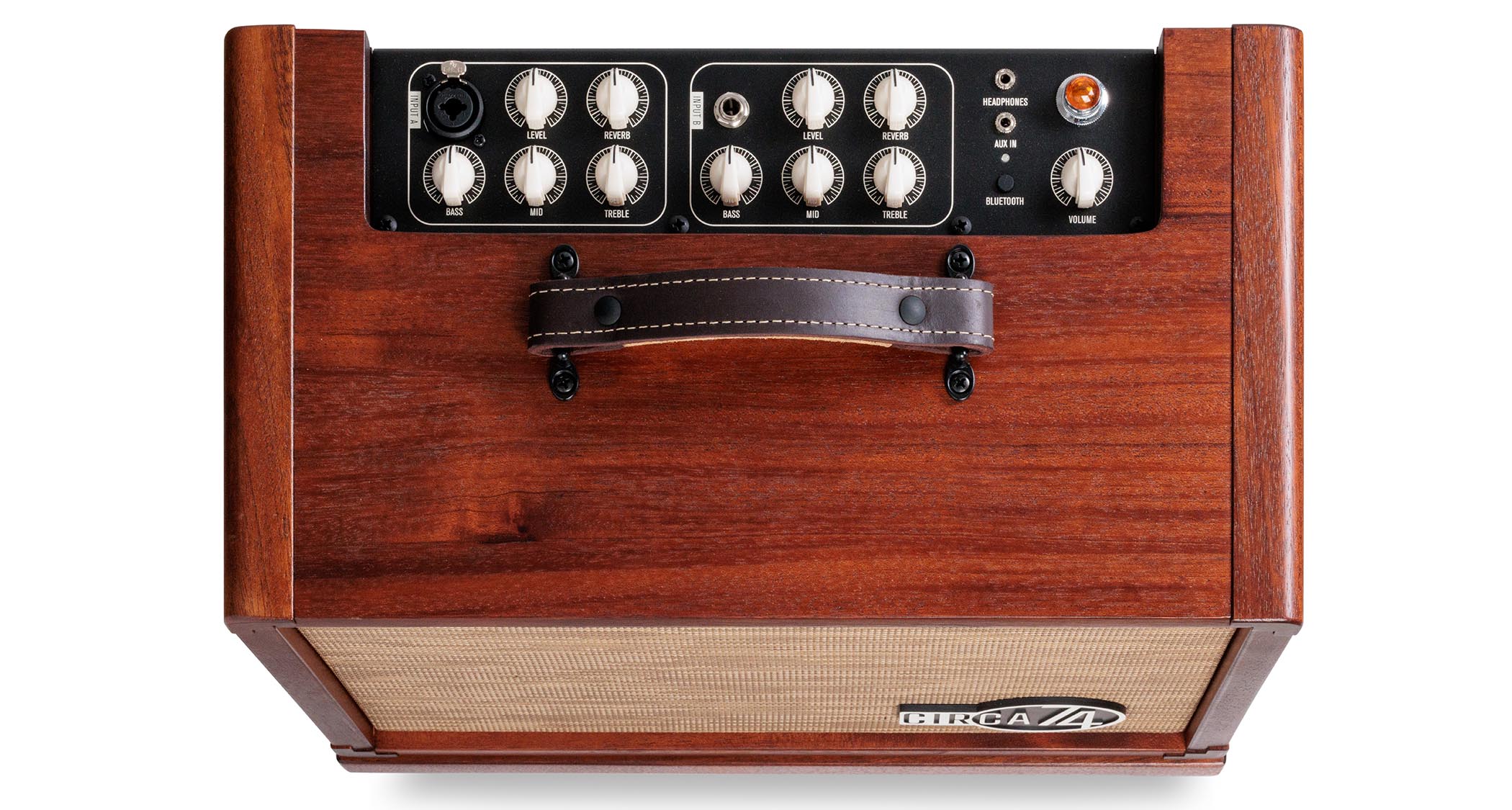
The reverb is perfectly fine for guitarists who prefer a more natural vibe and just want a little extra ambience to keep the guitar and/or vocals from sounding too dry.
The amp’s maximum volume output is more than loud enough for filling a medium-size theater venue or holding its own on stage with an electric rock band.
The signal remains crystal clean from 0 to 10, although a minor, barely perceptible amount of background noise is present at higher output settings.
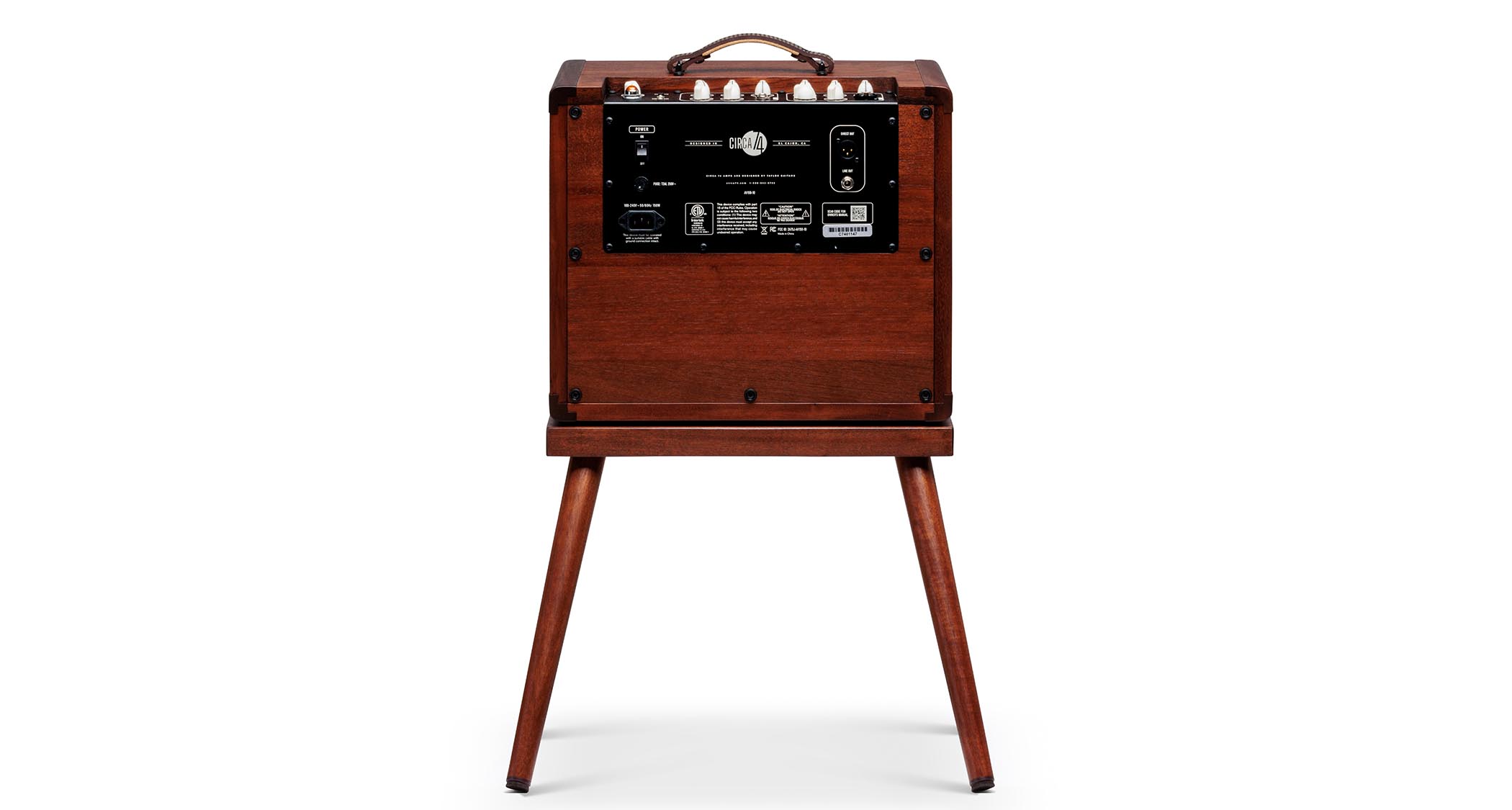
Specs
- PRICE: $1,199
- TYPE: Acoustic guitar amplifier combo
- OUTPUT: 150 watts RMS
- SPEAKER: 10", full range
- CHANNELS: 2, with master volume for aux in
- CONTROLS: Individual channel level controls, master volume; 3-band EQ; room reverb
- CONNECTIONS: Input A: XLR or ¼-inch for mic or guitar; Input B: ¼-inch for guitar; plus: ⅛-inch (3.5mm) line-level aux. input; XLR and ¼-inch line out; ⅛-inch (3.5mm) headphone out, Bluetooth
- CABINET: Mahogany
- WEIGHT: 24 lbs.
- CONTACT: Circa '74







